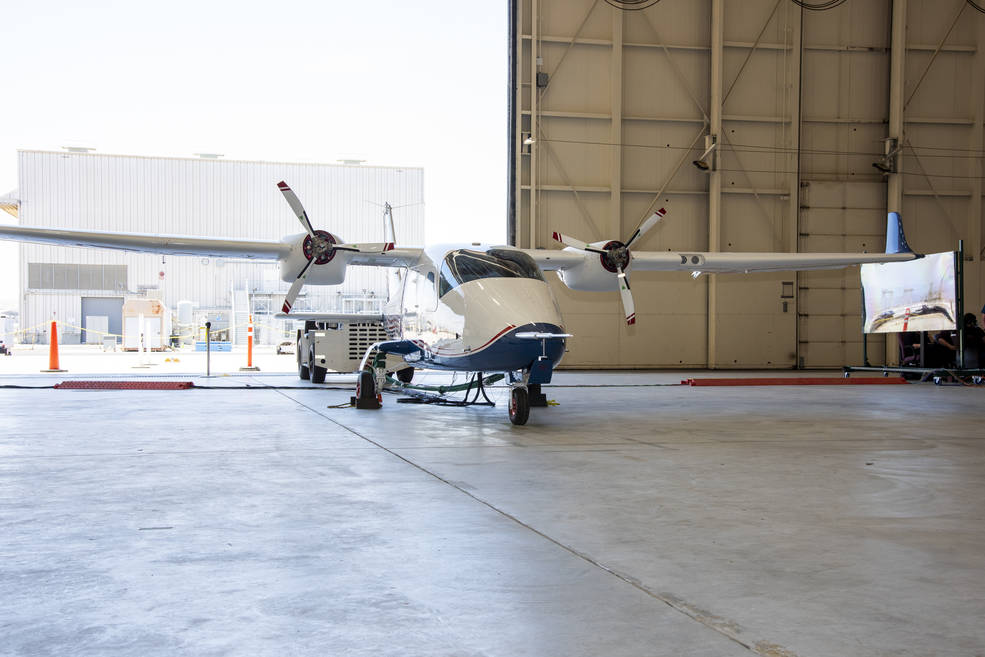
NASA is winding down its work on X-57 Maxwell all-electric aircraft project.
According to a press release the project will conclude aircraft operational activities by the end of September and will not fly the aircraft.
“The project encountered several challenges to safe flight, including mechanical issues late into its lifecycle and a lack of availability of critical components required to develop experimental hardware,” said the news statement. “Given the approaching planned end of aircraft operations, the timeline would not allow the team to reach acceptable flight conditions.”
“The primary goal of the X-57 project was to provide knowledge about the aircraft’s electric-propulsion-focused design and airworthiness process with regulators,” said NASA. “This information has already impacted and will continue to impact the development of advanced certification approaches for electric propulsion in emerging electric aircraft markets. The objective was not to develop a prototype, but to develop a test platform for technologies and design methods. And the team did just that, documenting and publishing the technology gaps and their solutions as they were discovered so that industry stakeholders could take advantage of those lessons as soon as possible.”
The aircraft was built by modifying an Italian Tecnam P2006T to be powered by an electric propulsion system. Tecnam also recently announced it was wining down its electric aircraft programme.
“Early in the project, the X-57 team members found they would need significant developments in battery technology,” said NASA. “The lithium-ion batteries installed on the aircraft warm up as they discharge energy and too much warming could result in overheating. The project worked with Electric Power Systems in North Logan, Utah to address this issue. Engineers demonstrated that the new battery system design would stay within acceptable, safe limits while powering the aircraft.
“The design of the cruise motor controllers is another success of the X-57 project. These controllers convert energy stored in the aircraft’s lithium-ion batteries to power its motors, which drive its propellers. The controllers use silicon carbide transistors to deliver 98% efficiency intended for high power take-off and cruise, meaning they do not generate excessive heat and can be cooled off by the air flowing through the motor. The team designed inverters to meet demanding mass and thermal requirements and are sharing these designs in technical publications so that industry can use them as a launchpad for new aircraft products. Most recently, the cruise motor controllers went through successful thermal testing.”
“The design of the cruise motor controllers is another success of the X-57 project. These controllers convert energy stored in the aircraft’s lithium-ion batteries to power its motors, which drive its propellers. The controllers use silicon carbide transistors to deliver 98% efficiency intended for high power take-off and cruise, meaning they do not generate excessive heat and can be cooled off by the air flowing through the motor. The team designed inverters to meet demanding mass and thermal requirements and are sharing these designs in technical publications so that industry can use them as a launchpad for new aircraft products. Most recently, the cruise motor controllers went through successful thermal testing.”
“During the integration phase the team encountered electromagnetic interference that affected the operation of onboard systems and required a solution. After extensive research the team designed, developed, and installed filters that resolved the issue. The approach will be added to the technical papers and shared with industry and the electric propulsion community.”
For more information
https://www.nasa.gov/feature/x-57-project-creates-paths-toward-electric-aviation

